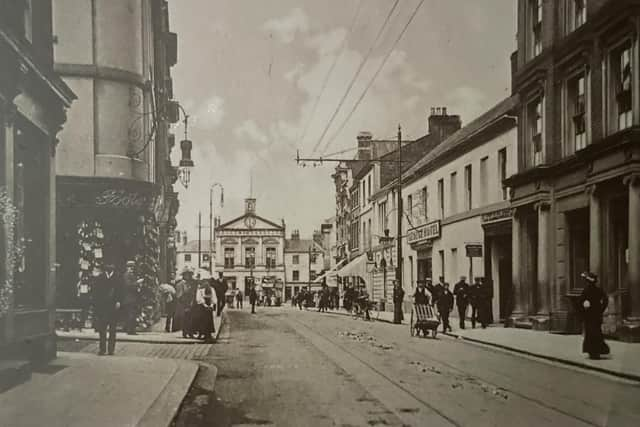Yesteryear: Trip back in time to early 20th century Luton
and live on Freeview channel 276
This animated street scene, which can be dated to between 1908 and 1919 thanks to the inclusion of both the tramway and the former Town Hall, shows locals going about their daily business. It is worth noting that the majority of individuals shown here seem to be sporting headwear themselves, whether that be a finely decorated bonnet or a straw boater.
The white building to the left of the image is the George Hotel, which sat at the heart of the town for centuries. The first surviving reference to the pub was in the Court of Star Chamber in 1509, during the reign of Henry VIII. A sales catalogue from 1895 describes the establishment as follows, “Having been established upwards of 300 years, is the principal Family and Commercial Hotel in the Town and is probably better known than any other House within a radius of 30 miles outside of London. It occupies a commanding and important position fronting George Street, which is the main thoroughfare of this largely increasing and thriving Market and Manufacturing Town, the centre of the Straw Plait Trade, and the premises extend to Waller Street in the rear”.
Advertisement
Hide AdAdvertisement
Hide AdIn the 19th century the hotel boasted 18 bedrooms, ‘excellent’ public and private bars, a spacious billiard room, well kept pleasure garden, a smoking room, reading room, and coffee room.


A survey of George Street in 1928 shows that, by this time, a lock up garage for 13 cars and and petrol pump had been added to the plot.
The George Hotel closed its doors for the final time in the 1965. Primark now sits on the site of the former building, which was demolished along with many of the town centre’s older structures to make way for the Arndale Centre in 1971.